PlayStation Portal review: Cloud gaming arrives one year on
Sony’s remote play handheld PS5 is neat but niche
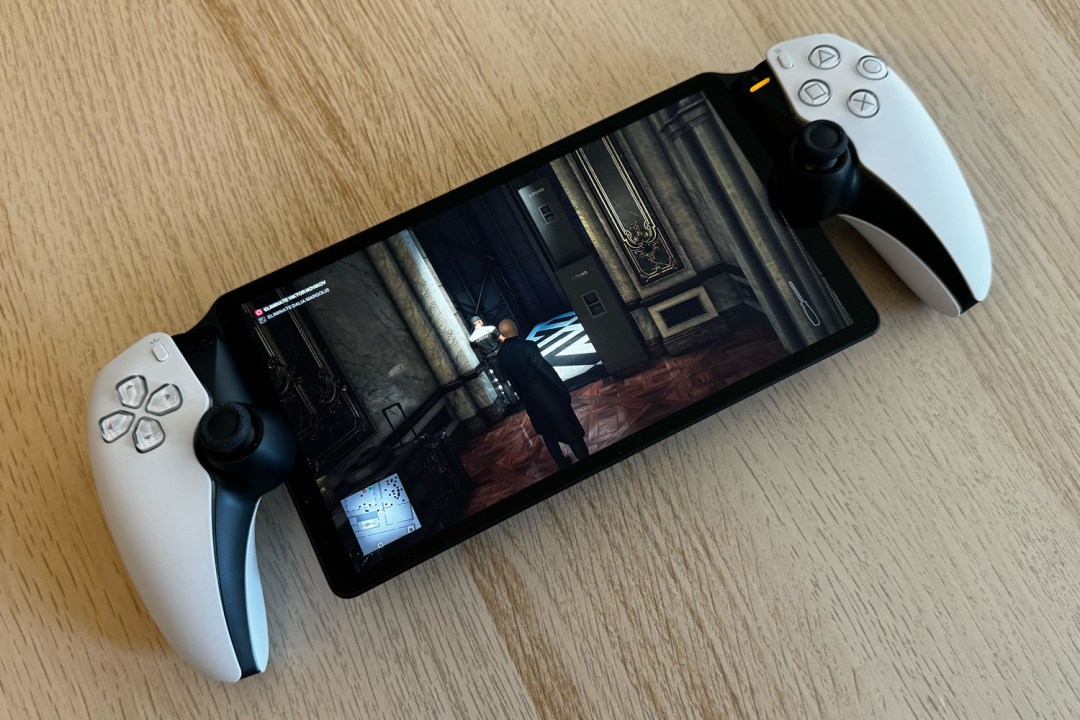
Stuff Verdict
Large display and full suite of DualSense controls make the PlayStation Portal the ultimate remote play device for your PS5 – but consistent performance depends on your Wi-Fi
Pros
- Immersive 8in display
- DualSense controls with low latency
- Mostly solid streaming quality
- Good battery life
Cons
- Dropouts and occasional bugs
- LCD is clearly inferior to OLED
- It’s a lot of money for a device that can’t run any games natively
- No Bluetooth
Introduction
Handheld gaming isn’t back, because it never really went away – but there’s no doubt playing games away from your telly is hot right now. The Nintendo Switch was first to really nail “big” games on a top console; increasingly powerful chips and a slew of mobile controllers have made your smartphone a genuine option for a quick game of Fortnite; As I write, a new handheld gaming PC is probably being unveiled somewhere, gunning for the Steam Deck’s crown.
Sony is no stranger to handhelds, and with the market booming, those who still swear by the PlayStation Vita were getting excited about the possibility of a sequel. If you pay attention to the rumour mill then you may have spotted some recent reports that Sony is secretly working away on a new handheld console that plays PS5 games, but right now we have the PlayStation Portal, which is categorically not a Vita 2, and has never been billed as such by its maker. In fact, it isn’t even a console; pick up Sony’s new handheld and you’ll see the words “remote player” etched on the box.
In many ways there’s nothing this $200/£200 device can do that the phone currently in your pocket can’t. The PlayStation Portal is essentially just a tablet with two halves of a DualSense controller stuck on either side, and initially it relied on a PS5 and a Wi-Fi connection to wirelessly stream your games. In November 2024, Sony updated the Portal to allow cloud streaming of select PlayStation Plus games, which is a significant development, and one we’ll get into in this updated review.
Either way, though, you will need a decent network connection, and without one the Portal will be the least useful slab in your house, as there’s no way to download games for offline play. It can’t do anything else either, so on paper, it’s a tough sell.
And yet, Sony knows that none of the above is likely to dissuade the people who have a place in their lives for a device like this. In households where TV time has to be shared, the Portal lets you keep playing without giving up the PS5’s clever controller functionality. It’s got a big, bright display and it won’t interrupt your Marvel’s Spider-Man 2 session with an incoming phone call from your mum. It’s a luxury, no doubt, but is it one worth considering?
I’ve been using the Portal on a regular basis (mainly in bed) since it launched towards the end of 2023, and enough has changed in the last 12 months to make it worth reassessing now. So let’s get on with it.
How we test gaming hardware
All games consoles and gaming hardware tested on Stuff are put through their paces with days’ worth of play time. We use our years of testing experience to judge areas such as build quality, software experience, battery life and other features. Manufacturers have no visibility on reviews before they appear online, and we never accept payment to feature products.
Find out more about how we test and rate products.
Design & build: Sense-ibly familiar



Sony has no problem with putting weird-looking devices into the world – see the PS5 – but the PlayStation Portal is still quite the thing to behold. It looks more like one of those wacky concepts people wildly share on social media than something that actually gets made. But make one Sony did, and do you know what? I quite like it. I’d hesitate to get one out on a train or a plane, for fear of elbowing the person next to me as much as anything else, but that isn’t really an option anyway.
The sheer width of the thing means that holding the Portal feels very different to holding a DualSense, but I like the weight balance (at 530g it’s heavier than a Switch, but lighter than a Steam Deck), and find the display portion rests nicely on my lap when I’m lying down. The sticks aren’t big as those on the DualSense (they’re actually the same as you’ll find on the PS VR 2 controllers) but you soon get used to them. If you play a lot of PS5, having exactly the same triggers and face buttons on a handheld feels wrong, but in a good way. Almost like you’ve cheated the system.
The Create and Options buttons remain in their DualSense positions, but as the middle of the pad now houses an LCD display, the PS and mute buttons move to the top corners of the controller halves.
Problems? The way the thumbstick modules eat into display bezel is a bit unsightly. The sticks are also just as at risk of drift as the standard DualSense sticks, but that would arguably be an even bigger issue on a £200 device that the controller is fixed to. 12 months in, they’re doing just fine.
Pressing the skinny power and volume buttons feels a bit awkward, on account of the small hump they’re nestled into. The lower half of the display portion also has no protection, and at launch I had visions of my knee snapping it in half when getting up quickly. Thankfully this hasn’t yet happened, but I still worry a bit.
I’m still not sold on Sony’s solution for the lack of a touchpad, which is used in a lot of PS5 games. In its absence, you touch either side of the touchscreen, which illuminates two small panels that you can either tap or swipe to replicate the standard touchpad’s functionality. It’s fine, but it’s inelegant and (whisper it) a bit too smartphone-y for my liking.
A USB-C port for charging is tucked away at the back, where you’ll also find a headphone jack (more on that in a bit). And to remind you that this is a device primarily intended for in-the-home handheld play, Sony hasn’t included a case of any kind in the box. This quickly became annoying (especially during a house move last year), and in the interest of protecting the display from an attack of the dust, or worse, I eventually invested in a third-party case on Amazon, of which you can find plenty now.
Screen: size matters
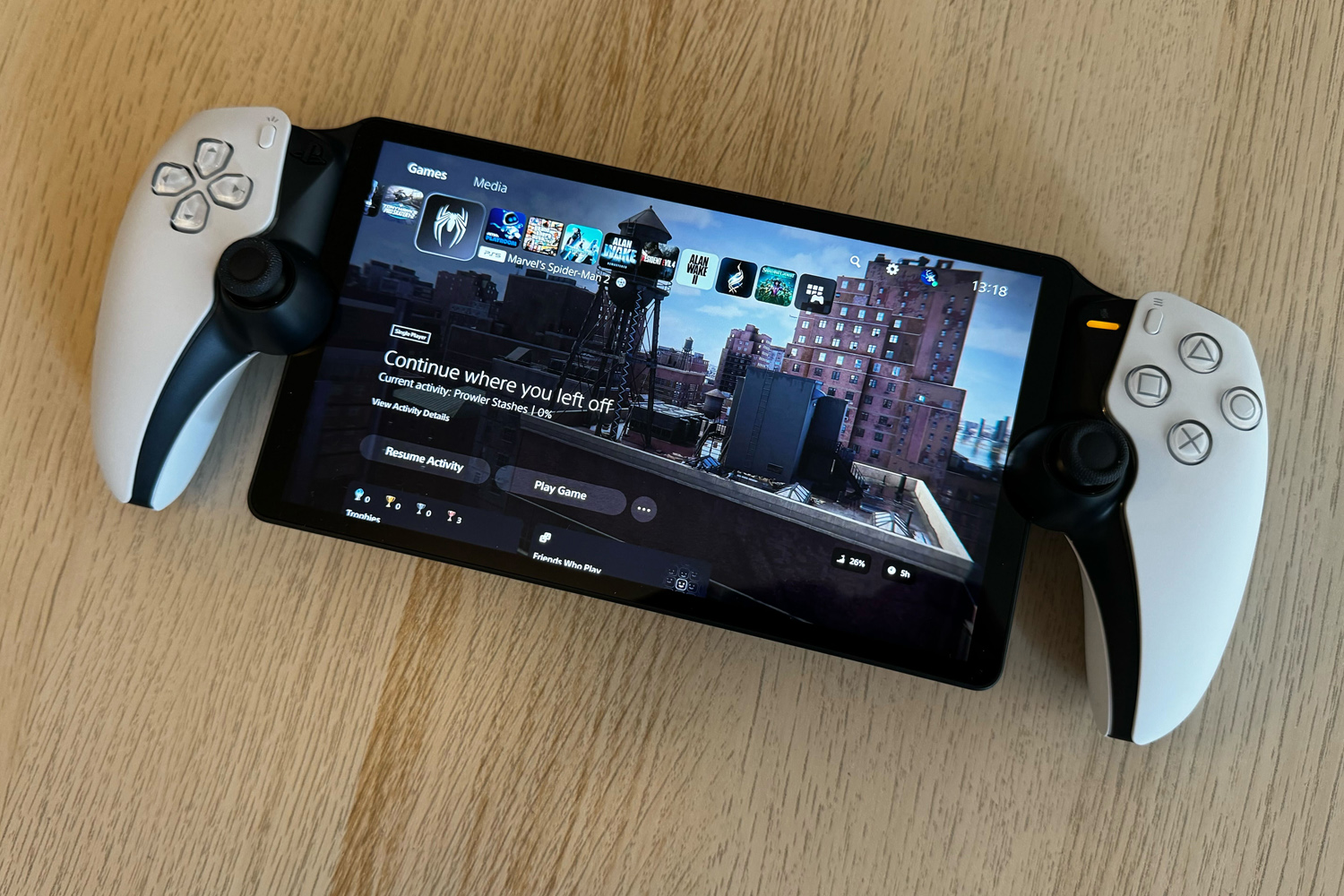

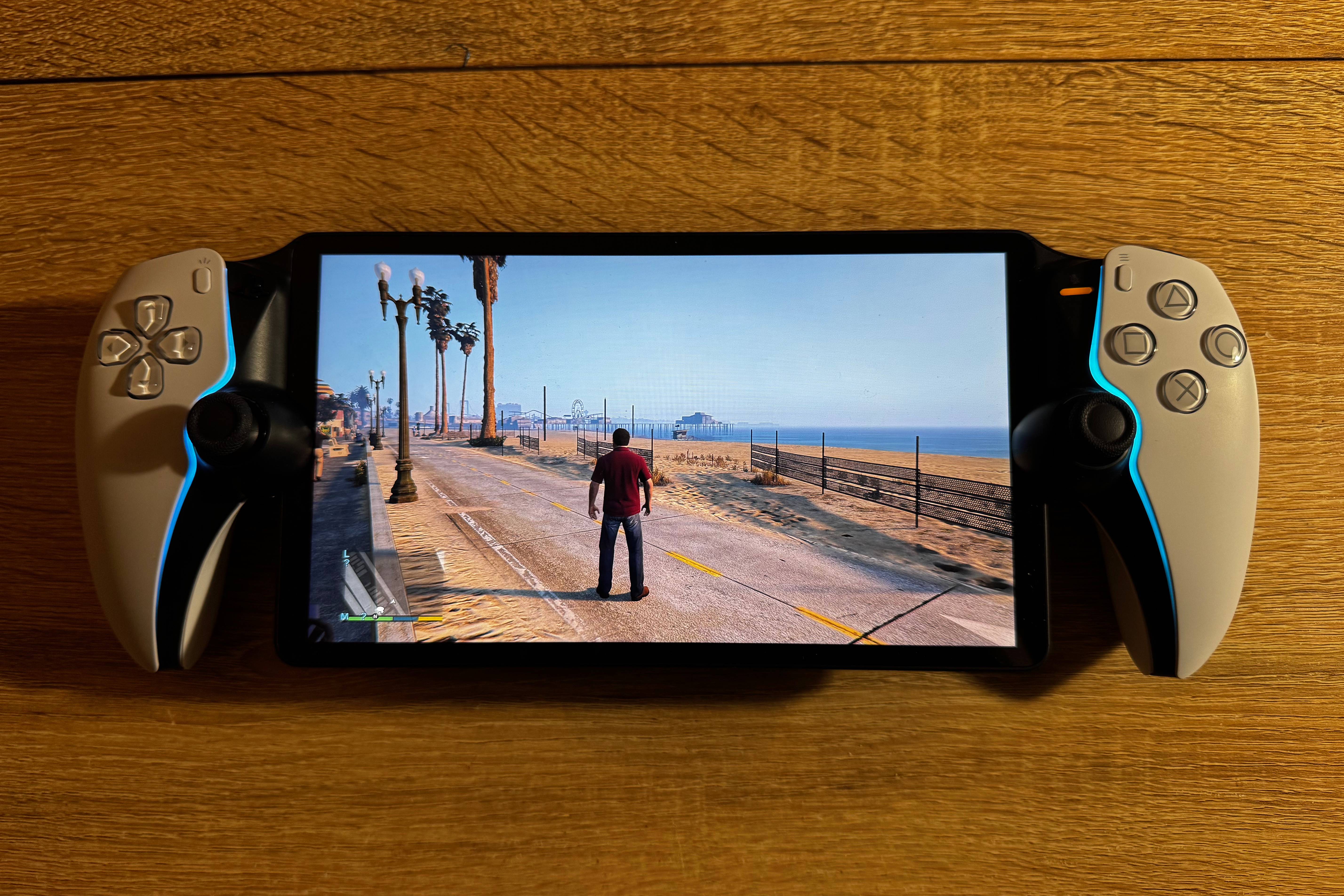
The PlayStation Portal’s 8in screen uses an LCD panel good for 1080 resolution at 60fps, if your Wi-Fi can deliver it. Eight inches is an undeniably immersive size for a display you’re holding up to your face, and will no doubt dwarf any phone you’ve been using for remote play up until now. It’s a nice, bright and colourful panel, and I haven’t needed to have it above half brightness at any point, which is definitely a plus when it comes to battery life.
There’s no getting away from the fact that this isn’t an OLED display, though, and that’s a shame. Chances are your phone has an OLED panel; the Nintendo Switch has one; the Steam Deck now has one too. Sony’s own PS Vita had an OLED – 12 whole years ago. Handheld gamers are increasingly getting used to the superior contrast, colour reproduction and those delightfully inky blacks that OLED tech brings, so it’s hard not to feel a bit underwhelmed here.
I think the size of the Portal’s screen definitely goes some way to making up for the LCD-ness of it all, and you could make a strong argument that putting anything better on a strictly remote play device would be overkill anyway. Truthfully the display tech has bothered me less than I expected it to, and I really love how expansive it is. But I don’t use the Portal as much as my Switch or Steam Deck. Both of those are the OLED variants and I wouldn’t want to go back now.
Features: I want to stream


At launch, the PlayStation Portal could stream games from your PS5, and that was it. There’s no formidable CPU, no internal storage and no dedicated OS. It is literally just the PS5 experience, shrunken down and zapped into your lap. Things have changed a little bit since then, which we’ll get to shortly.
Because you’ve got the same haptic feedback and adaptive triggers, playing the Portal feels like you’re playing a handheld PS5. Sure, the games don’t look anything like as good as they do on a massive 4K TV, nor do they run quite as slickly, but it feels the same in your hands. You can strap your phone to a DualSense pad already, if you want, but I prefer the dedicated device approach. It’s just a lot more convenient and immediately available than the alternatives, and that does matter.
The PlayStation Portal is the first device to have PlayStation Link, Sony’s new lossless, low latency wireless audio standard, built into it. This makes it the perfect partner for the Pulse Explore earbuds and Pulse Elite headset, both of which leverage PlayStation Link. I use the Pulse Elite headset with my PS5 and Portal on a daily basis, and hopping between the two devices is pretty seamless. The Portal doesn’t automatically connect to the headset, though. I usually have to press the dedicated PS Link button to re-pair each time after using the Pulse Elite with my PS5, which is a bit annoying, even if it only takes a second or two. You can also pair your Link-supported headset with a Bluetooth device and switch between the two.
Don’t own one of Sony’s headsets? You’re a bit out of luck. The PlayStation Portal doesn’t support Bluetooth, so for now you’ll have to make do with a wired headset. Given the well-documented latency issues that Bluetooth can present, which would likely be exacerbated further when you’re streaming audio from another device, I’m not totally surprised that Sony gave it a miss here, but it does mean investing in more accessories for the optimum experience. The Portal does have built-in speakers, which are fine, but if you’re going to be sitting down with this thing for a few hours you’re probably going to want a headset.
At launch I dinged the Portal for not supporting cloud streaming of any kind. It just seemed odd when Sony’s PS Plus service does offer cloud streaming and has done for a while. Sony clearly listened to the widespread criticism of this omission, as last month a feature that allows game streaming from the cloud on the PS Portal went into beta. The catch is that you need to be a PlayStation Plus Premium subscriber and you can only choose from roughly 120 games currently included in the PS Plus Game Catalogue. Right now you can’t stream games you own outside of those included on PS Plus, nor PS4 or PS3 games from the cloud on the Portal, which is a bummer given that cloud streaming remains the only way to play PS3 games on the PS5.
Still, this is a significant update, not only because you no longer need to be able to access your PS5 to play games on the Portal, but because you technically no longer need a PS5 full stop. Would I advise forking out $18/£13.49 a month for a PS Plus Premium membership if your only way to play games is over the cloud? Probably not, but it does make the Portal a very affordable way to play the likes of Ghost of Tsushima: Director’s Cut, Marvel’s Spider-Man: Miles Morales and Ratchet and Clank: Rift Apart with DualSense controls if you’re not bothered about pin-sharp 4K visuals and trust your Wi-Fi speeds.
Performance: Remote play


As there are now two ways to play games on the Portal, I’ll assess each one in turn below.
When you boot the PS Portal now you’ll be presented with a home screen that allows you to choose between remote play and cloud gaming (if eligible). For now, let’s focus on the original Portal experience, which is remote play with the PS5.
The obvious comparison to make with the PlayStation Portal would seemingly be the Nintendo Switch – but really what you’re actually looking at is the PS5’s answer to the Wii U. No games run natively, and you’re relying on your Wi-Fi connection for the Portal to work. For all its flaws, Nintendo’s ill-fated console excelled on latency between console and Gamepad. I hoped for a similar experience here.
On first use you’ll need to connect to the same Wi-Fi network as your PS5. Provided you’ve enabled remote play on the console, pairing is quick and easy. You’re able to turn the PS5 on and off remotely, and connecting is simply a case of following the on-screen prompts. I’d like connecting to the PS5 each time I turn the Portal on to be a few seconds faster, but the process is slick and makes it feel like a proper PlayStation product.
Sony recommends a connection speed of at least 15Mbps for reliable streaming, which my own comfortably exceeds without being remarkable. I would say that after using the device for a year, you ideally want quite a bit more speed than the suggested baseline. I connected my PS5 to my router’s 5Ghz band, which you can force the console to do in settings if your router isn’t capable of splitting bands. For the fastest and most reliable connection you’ll want to hook your PS5 to your router using an Ethernet cable, but I’ve stuck to Wi-Fi for this review as I think that’s what most people will be doing.
When everything is working as advertised, the Portal can be a great experience. The first game I booted up was Marvel’s Spider-Man 2, and while the game clearly takes a visual hit, I was impressed with how smoothly it ran. Swinging through Manhattan felt responsive and the stream retained plenty of detail. I then fired up Tony Hawk’s Pro Skater 1 + 2, another fast-moving game with a lot of quick inputs, and was able to play without being bothered by latency, which was only noticeable if I really concentrated on it.
Returning to the brilliant Astro’s Playroom was also a delight. I was impressed by how sharp it looked on the Portal’s large display, and the DualSense features worked just as well as they did when I played it at launch on the PS5.
That said, performance can fluctuate pretty wildly. During some sessions, there has been more perceptible input lag, particularly during one Spider-Man mission that ultimately resulted in me switching back to the main console. I’ve also encountered audio crackling, one too many mid-game disconnections and sudden muddiness in the visuals that really kills the vibe. My apartment isn’t huge; even in another room I’m never too far from the router, so I’m hoping firmware updates will resolve some of these issues pretty quickly. As Sony has full control at both ends of the hardware here, it’s fair to expect a smoother experience than you get on a phone, but ultimately it’s always going to come down to the strength of your connection, and you’re only really going to know how that shakes out when you’ve purchased the device and are using it every day.
I’ve already started to prefer streaming games that don’t require lots of quick inputs, with Hitman World of Assassination proving to be an early Portal favourite. I also made more progress in Baldur’s Gate 3 on the Portal than I did for weeks on the PS5 proper, as it makes for the perfect bed game. The big screen ensures text is easy to read, too. Twitchy shooters are simply not the way to go with this device, but it’s well suited to games that don’t have as much fast movement for the stream to contend with.
Knowing how bad the DualSense’s battery life can be, the Portal’s own is surprisingly good at around eight hours based on testing. It doesn’t half take its time to charge though.
Performance: Cloud gaming

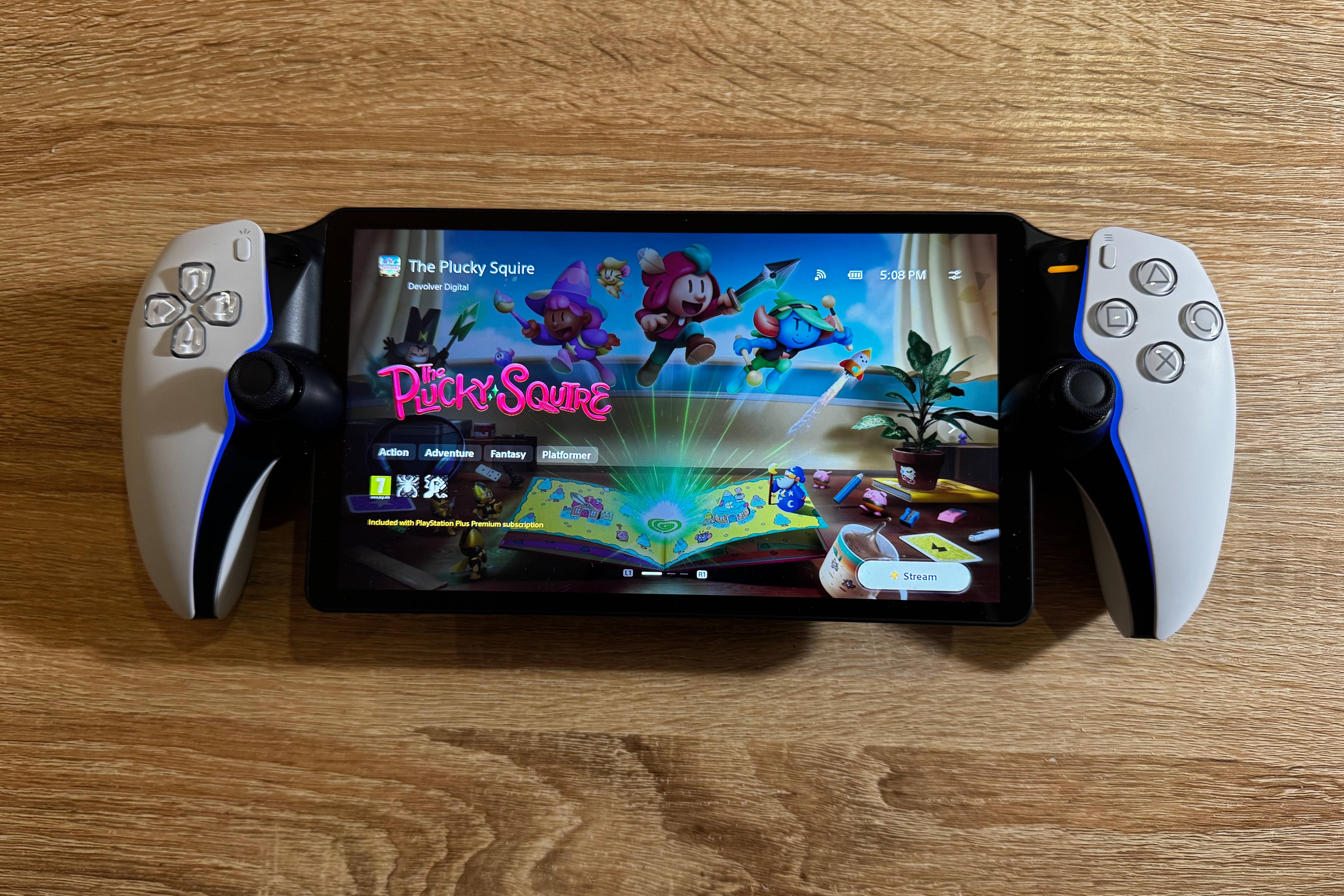

I’ve been using the Portal as a remote player for the last 12 months, but have only had a few weeks testing the new cloud gaming functionality. So these are still fairly early impressions, I’ve been surprised by how solid the whole experience is so far.
When you select cloud gaming from the home menu you have to wait for a few seconds for the service to load, and once you’re in you can choose from more than 120 PS5 games in the PS Plus Game Catalogue. There’s currently no way to filter them, but it is still a beta feature. Once you’ve selected a game it’s simply a matter of waiting for it to load from the cloud, a process that can take up to half a minute but has only failed on me once so far for reasons I couldn’t work out.
While remote play gaming still underwhelms pretty regularly, I’ve been pleasantly surprised by my cloud experience so far. Power-hungry games like GTA V and Ghost of Tsushima have been running surprisingly smoothly, with a pretty clear 1080p image and very minimal input lag. By contrast, I played 20 minutes of Star Wars Outlaws via remote play on my PS5, which should still offer a superior streaming experience with it being local, and it looked pretty awful, with a noticeable delay between my inputs and what was happening on screen. You just never know what you’re going to get.
Granted, it’s early days for Sony’s cloud servers and time will tell how the Portal holds up in the long run, but I was expecting a bigger hit to image quality and latency than I’ve been getting. In fact, I played about an hour of the charming indie Zelda-like, The Plucky Squire, on the Portal and completely forgot it wasn’t running natively. PS5 features lime 3D audio support are currently missing, but otherwise you aren’t giving up a huge amount.
Microsoft has been pushing cloud gaming on Game Pass for a while now, and it’s something I’ve dabbled with on my phone and various handhelds, with very mixed results. Queuing to get into a game can often take so long that I give up, and performance is very inconsistent. Maybe the Portal will face the same fate as more PlayStation gamers experiment with cloud streaming, and that fear of volatility is still the biggest note of caution with cloud gaming in general. But for now at least it’s become my preferred way to play games on Sony’s device, which I didn’t anticipate with my decent-but-not-spectacular internet connection.
PlayStation Portal verdict
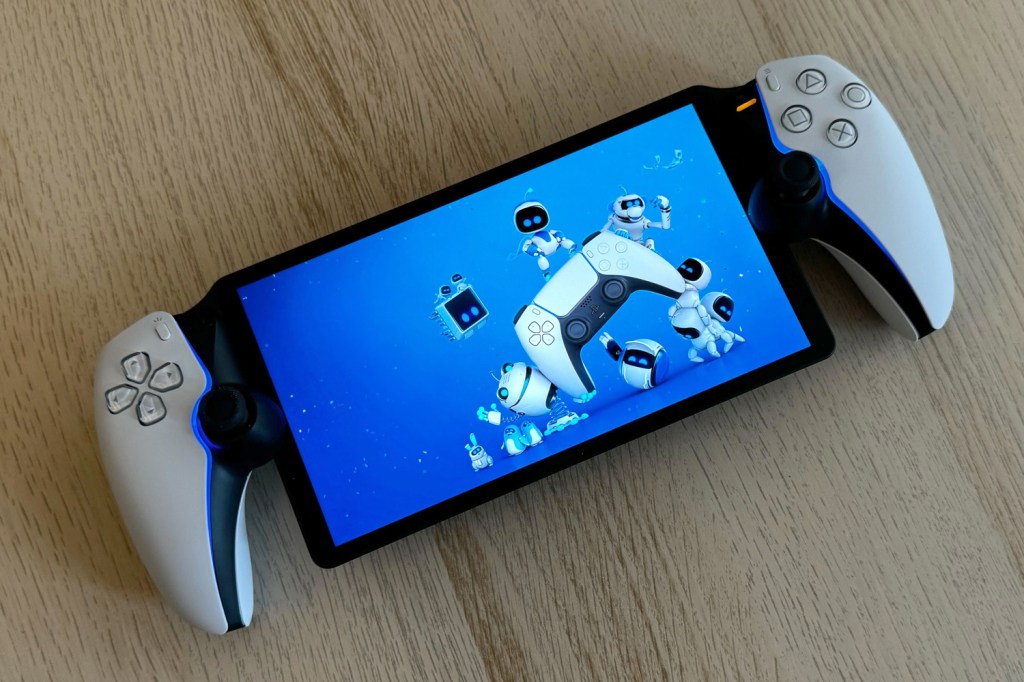
If you’ve got incredibly fast Wi-Fi and routinely find yourself fighting with other members of the house over who gets the TV come 9pm, the PlayStation Portal could be a four, or even five-star product for you, especially now you have the option of cloud streaming too.
But in my experience performance is far from flawless, particularly where remote play is concerned, and you’re still paying £200 for something that at least three other devices within touching distance of you right now can probably do for free with the PS Remote Play app. Without Bluetooth, you really need to invest in a PS Link headset too to make it worth having, and right now you still can’t play the classic PlayStation games you pay for on PS Plus, even if you’re a Premium member. Hopefully that changes soon.
Still, there’s a lot to like about the PlayStation Portal. As strange as it looks, it feels really nice in your hands, while I appreciate the big screen and DualSense features that I’ve come to value so much on the PS5. I also love that I can keep playing my games while I have the football on the TV, and have done so quite a bit in the last 12 months.
A lot of people will already have known if this device is for them before reading this review. If you’re on the fence, though, ask yourself the following questions. Do you use game streaming enough to lay down the same amount of money you would if you were picking up a far more capable Nintendo Switch Lite? If not, you’re better off just putting your phone into a Backbone One mobile controller. And if you are sold on streaming being the future, do you trust your router to ensure you keep having fun?
If the answer is yes, the PlayStation Portal is the best and most convenient way to stream PS5 games from your console or the cloud, no contest. And if enough people buy one, perhaps Sony will finally give us the Vita 2 we deserve.
Stuff Says…
Its large display and full suite of DualSense controls make the PlayStation Portal the ultimate remote play device for your PS5, but it’s missing basic features and consistent performance depends on the strength of your Wi-Fi
Pros
Immersive 8in display
DualSense controls with low latency
Mostly solid streaming quality
Now supports cloud gaming
Cons
Dropouts and occasional bugs
LCD is clearly inferior to OLED
A lot of money for a device that can’t run any games natively
No Bluetooth
PlayStation Portal technical specifications
| Screen | 8in, 1920×1080 LCD w/ 60Hz |
| Connectivity | Wi-Fi, PlayStation Link, 3.5mm, USB-C |
| Controls | DualSense accelerometer, gyroscope, adaptive triggers, haptic feedback |
| Recommended Wi-Fi speeds | 15Mbps (minimum) |
| Battery life | Eight hours (as tested) |
| Weight | 530g |



